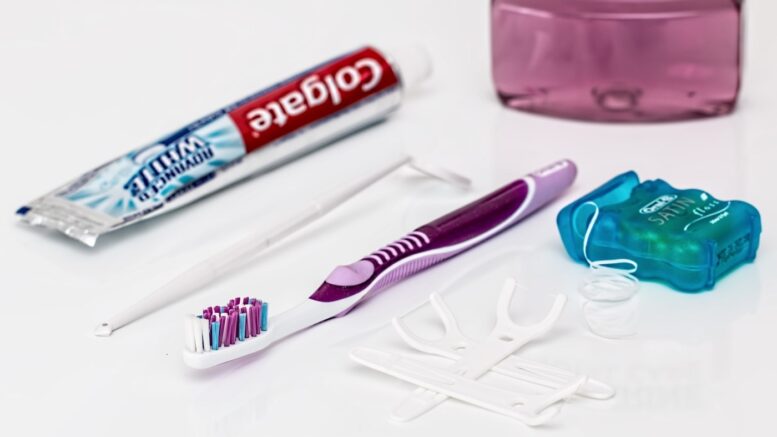Maintaining a high standard of oral hygiene and prioritizing dental health are often underestimated aspects of overall wellness. Good oral hygiene is more than just the key to a brilliant, confident smile; it plays a major role in warding off various dental diseases, including cavities, gum disease, and tooth loss. An increasing body of research indicates a link between oral health and several systemic conditions, such as heart disease, diabetes, and even certain types of cancers. The truth is, our mouth is a window to our general health, and the state of our teeth, gums, and oral tissues can often be a telling reflection of our body’s overall health condition.
This article reviews the basics of improving and maintaining your dental health with oral hygiene tips. Whether you’re looking to bolster your existing oral care routine or beginning to chart your path towards better oral health, this guide provides practical and actionable advice to help you achieve your goal.
1. Brush Twice a Day
Brushing your teeth twice a day stands as the cornerstone of any oral hygiene routine. This requisite practice, endorsed by a reputable Reno dentist, is not just a morning or bedtime ritual, but is necessary for maintaining healthy teeth and gums. It aids in removing plaque, a sticky film of bacteria that can accumulate on your teeth and lead to tooth decay and gum disease. Additionally, it’s a surefire way to prevent bad breath, ensuring that you feel fresh and confident throughout your day.
Each brushing session should ideally take around two minutes, providing enough time to clean all surfaces of your teeth thoroughly. Using short, gentle strokes, make sure you reach your back teeth, front teeth, and chewing surfaces. When it comes to tools, opt for a soft-bristled toothbrush that fits comfortably in your mouth, allowing easy access to all areas. An electric toothbrush can also be a viable choice, particularly for those who find regular brushing challenging. Choose a fluoride toothpaste, an ingredient that strengthens tooth enamel and fights decay.
2. Floss Daily
If brushing is the first line of defense in oral hygiene, consider flossing as the necessary reinforcement. Flossing complements brushing by removing food particles and plaque from areas your toothbrush cannot easily reach – primarily between your teeth and under the gumline. Daily flossing can significantly reduce the risk of gum disease and tooth decay, contributing significantly to overall dental health.
When it comes to flossing, technique matters. Gently slide the floss between your teeth, curve it into a ‘C’ shape against one tooth, and slide it into the space between the gum and the tooth until you feel resistance. Move the floss up and down, making sure to cover both sides of the teeth. However, be gentle to avoid causing damage to your gums. As for the common myth that bleeding gums during flossing is a bad sign – it’s not entirely true. If you’re new to flossing or haven’t been consistent, your gums may bleed a bit, but this should improve as your gums get healthier with regular flossing. And if the bleeding persists, it’s a good idea to consult your dentist as it could indicate gum disease.

3. Use Mouthwash
Mouthwash can reach areas of your mouth that brushing or flossing might miss, reducing the risk of cavities and gum disease. It can also help freshen breath and reduce plaque formation. However, not all mouthwashes are created equal. When choosing one, look for therapeutic mouthwashes that contain active ingredients for fighting plaque and gingivitis, and those with fluoride for fighting tooth decay. Try to avoid those with alcohol, as they can dry out your mouth. Use mouthwash at least once a day, typically after brushing and flossing. To use it effectively, swish it around your mouth for about 30 seconds and then spit it out. Mouthwash is not a substitute for brushing and flossing, but it can support a well-rounded oral hygiene routine.
4. Change Your Toothbrush Regularly
Over time, toothbrush bristles can become frayed and worn out, reducing their effectiveness in cleaning your teeth properly. Dentists recommend replacing your toothbrush every three to four months to avoid the accumulation of bacteria.
5. Clean Your Tongue
Your tongue, with its numerous crevices and taste buds, is an ideal breeding ground for bacteria that can lead to bad breath and negatively impact oral health. By cleaning your tongue regularly, you can remove this buildup of bacteria, food particles, and dead cells, contributing to a healthier mouth. Use a professional tongue cleaner or a soft-bristled toothbrush. Start at the back of your tongue and work your way forward, gently scraping the surface. Be careful not to scrub too hard or go too far back to avoid discomfort. Rinse the cleaner or brush after each stroke to wash away the debris.
Conclusion
Oral hygiene is more than a pathway to a sparkling smile; it’s a cornerstone of our overall health and wellbeing. By incorporating these tips into your daily routine, you’re taking a proactive stance towards safeguarding your dental health. Each small step you take towards better oral hygiene not only enhances your oral health but also contributes to a healthier, happier you!
